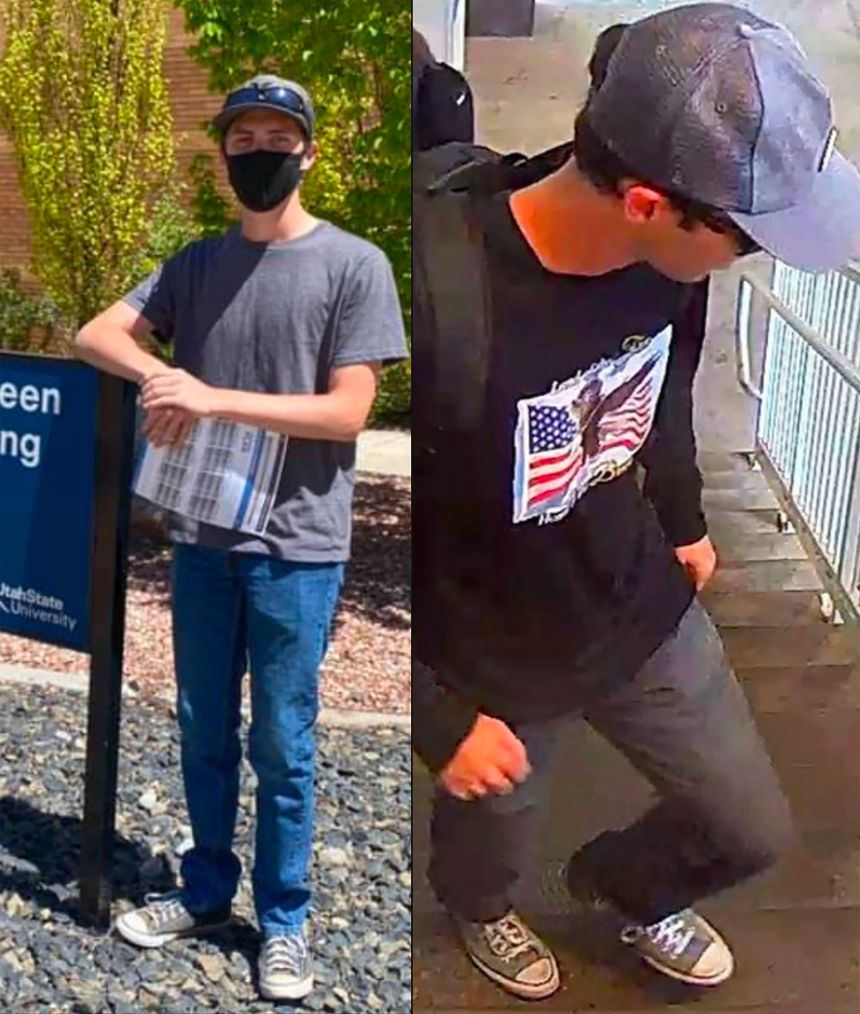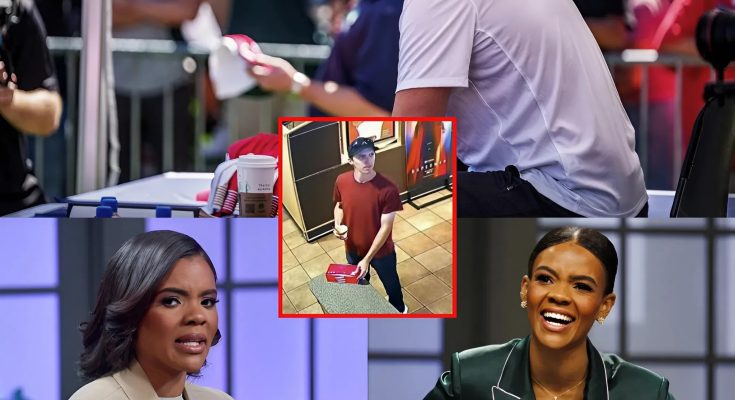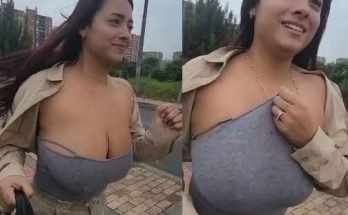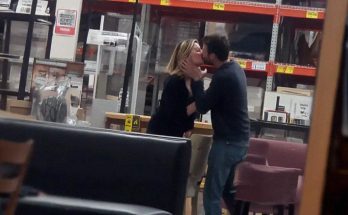The alibi that once seemed airtight is now collapsing under the weight of a single photograph. Candace Owens has just dropped a bombshell: an image of Tyler Robinson casually standing at a Dairy Queen, timestamped 6:38 PM. That’s only 17 minutes away from campus—far too close, far too risky, and far too coincidental.
This story is a work of fiction. Names, characters, and incidents are used fictitiously for narrative purposes only. Any resemblance to real persons or events is purely coincidental.
The photo arrived at 9:12 a.m. on a Wednesday — quiet, gray, the kind of morning that Washington usually saves for bad news. Candace Owens didn’t expect it. Nobody did.
Her phone buzzed once. A message from an unlisted number. One attachment.
A photo.
There he was: Tyler Robinson, standing by the counter of a Dairy Queen, one hand in his pocket, the other holding a chocolate-dipped cone. The timestamp burned at the bottom corner of the image —
6:38 PM.
It was only seventeen minutes away from campus.
And seventeen minutes was all it took to destroy the defense.

Candace leaned back in her chair, eyes fixed on the photograph glowing on her phone. Around her, the newsroom hummed — phones ringing, editors shouting, monitors flashing breaking headlines about an election scandal that had already consumed the capital.
But this was something else entirely.
For weeks, Robinson’s legal team had claimed he’d been miles away from the university when the violence erupted. They built their alibi on distance, timing, and surveillance gaps — the kind of airtight defense only arrogance can afford.
Now, the photograph shattered it in one click.
Candace didn’t smile. She rarely did when the truth showed its teeth.
She picked up her phone, called her assistant.
“Get me the metadata. Original file, GPS coordinates, everything.”
Her assistant hesitated. “Are we… going public?”
Candace stared at the photo again. The truth, in its rawest form, didn’t need permission.
“Not yet,” she said. “First, I want to know who took it.”
Meanwhile, in a modest townhouse across the river, Tyler Robinson watched the news in silence. His name wasn’t in the headlines — not yet. But the edges of his world had already started to blur.
He’d built his story carefully, word by word, alibi by alibi. At first, it was believable: the receipts, the texts, the witness who saw him leaving town at 5:50 PM. But lies are living things — they breathe, mutate, and grow fragile when left in the dark too long.
When the phone rang, he didn’t answer. He didn’t have to. He already knew who it was.
“Tyler.” The voice on the voicemail was low, controlled. It was his attorney. “Call me. Now.”
By midday, the story had begun to leak. Someone had whispered to a rival outlet that Candace Owens had “damning photographic evidence” contradicting the official timeline. Within hours, speculation flooded social media — the kind of digital wildfire no amount of denial could contain.
At The Washington Ledger, Candace was two steps ahead. She had what nobody else did — the original file. She’d confirmed the timestamp through the phone’s metadata, traced the GPS location to a Dairy Queen just seventeen minutes from the university gates, and verified that the photograph hadn’t been edited.
In the image, the neon signs reflected in the window matched perfectly with the evening’s weather pattern — cloudy with light drizzle. The details didn’t lie.
And yet, something else did.
Candace’s instincts, sharp from years of watching politicians squirm under scrutiny, whispered that the photo was only part of a larger puzzle.
“Someone wanted this to surface,” she murmured to her producer. “Someone with precision. Someone who knew exactly what this would do.”
“Blow up the case?” the producer asked.
Candace nodded. “And maybe… expose the wrong people.”
That night, she drove across the bridge into the city, rain slicing the windshield like glass. The Dairy Queen was still open, its fluorescent lights cutting through the dark. She parked across the street and stepped out, notebook in hand.
Inside, everything looked the same as in the photo — the counter, the clock above the register, the faded menu board advertising “Two-for-One Blizzards.”
She showed the image to the clerk, a college student who blinked nervously.
“Yeah,” he said. “I remember him. Weird guy. Said he was waiting for someone.”
“Did he meet them here?”
The clerk shook his head. “No. He left about ten minutes later. I think he walked toward the old library.”
Candace felt a pulse of adrenaline. The old library sat between the Dairy Queen and the university — a perfect midpoint. A no-man’s-land of timing and geography.
If Tyler had gone that way, he’d been close enough to—
She stopped the thought. No assumptions. Not yet.
Two hours later, Candace’s editor called. “You’ve got thirty minutes. The networks are running it. Either we publish, or someone else does.”
Candace stared at the photo one last time. The world saw evidence; she saw a chessboard. Every move had purpose, and this — this felt like a move made by someone who already knew the ending.
She filed the story, but not before adding one line at the bottom:
“If this image is real, it doesn’t just change a timeline — it changes everything.”
The reaction was immediate and volcanic.
Talk shows dissected every pixel of the photo. Analysts debated lighting angles. Online forums exploded with theories. Tyler Robinson’s name trended across platforms.

At 3:00 AM, he broke his silence.
“This is a setup,” he told a late-night reporter outside his home. “That photo’s a lie. I wasn’t there.”
But the public wasn’t convinced. The clock didn’t lie.
And neither did the look in his eyes.
The next morning, Candace was summoned to testify before a congressional subcommittee investigating the university incident. Her role was supposed to be simple: provide the image, explain the metadata, and step aside.
But politics has a way of twisting truth into spectacle.
The committee room buzzed with cameras, journalists, and whispered alliances. Senators leaned close to staffers. Aides shuffled papers like nervous magicians hiding a trick gone wrong.
Kennedy — the committee chair — adjusted his glasses. “Ms. Owens,” he began, “you’ve presented this photograph as authentic. Are you aware of the legal implications if it’s proven otherwise?”
Candace met his gaze, unflinching. “Senator, the photo’s authenticity has been verified by two independent analysts. If it’s false, then someone went to extraordinary lengths to make it appear real.”
Kennedy leaned back. “Then perhaps the real question isn’t what the picture shows, but why it exists at all.”
A murmur rippled through the room.
Candace smiled faintly. “I’ve been asking myself the same thing.”
Behind closed doors, Tyler Robinson’s defense team scrambled. They hired digital forensics experts, analysts, even private investigators to find cracks in the photo’s chain of custody. Every test came back the same: authentic.
But one anomaly surfaced — a faint reflection on the Dairy Queen’s glass door.
A silhouette.
Someone else had been there.
Candace caught it first. She zoomed in, enhanced the frame, and froze. The shape wasn’t Tyler’s. It was taller, wearing a hat, standing slightly to his left. Whoever it was had taken the picture — and remained invisible until now.
She ran the image through a filter, aligning the timestamp with local security footage. Ten minutes later, she had a match: a black SUV parked outside, its license plate blurred by rain.
She cross-referenced it with city records. The vehicle belonged to a federal contractor.
Her stomach tightened.
This wasn’t coincidence. It was choreography.
As days turned into weeks, the story twisted further.
Tyler Robinson disappeared from public view. His lawyer released a brief statement claiming his client had “gone into protective custody due to credible threats.”
Candace’s inbox filled with encrypted messages, some from anonymous whistleblowers hinting at surveillance operations gone rogue.
The deeper she dug, the darker it got.
One document suggested that the photo had been planted deliberately — not to expose Robinson, but to divert attention from something else entirely: a covert funding channel tied to the campus project that started it all.
“Follow the timing, not the image,” one anonymous email read. “The truth isn’t in who’s pictured — it’s in who benefits.”
Candace printed the message and pinned it above her desk.
By the time autumn settled over Washington, the story had evolved into a full-blown political earthquake. Committees clashed. Investigations multiplied.
And somewhere beneath it all, one truth glimmered faintly through the fog of accusation and deceit: the photograph had never been about one man’s guilt. It was about leverage.
The image was bait — and everyone had bitten.
Months later, Candace sat alone in a quiet café, a notebook open in front of her. Across the room, a television replayed old footage of the case: the Dairy Queen, the press conferences, the endless pundit debates.
She took a sip of coffee and smiled faintly.
Her phone buzzed. Another message from an unknown number.
“Nice work, Owens. You played your part perfectly.”
Attached was another image.
The same Dairy Queen.
Same timestamp.
Different angle.
And in the corner of this one — barely visible — was her.
Standing outside.
Watching.
The realization hit like a physical blow. She hadn’t found the story; the story had found her.
The photograph was never just evidence — it was a loop, a trap designed to ensnare everyone who reached for it.
Candace exhaled slowly, closed her notebook, and slipped her phone into her coat pocket.
The truth was still out there, waiting — sharper than ever, heavier than ever.
And somewhere, someone was already taking the next picture.
Millions Witness Heartbreak Online: Charlie Kirk’s Father Collapses at Memorial – The Next Moment Leaves the Nation Stunned..D







